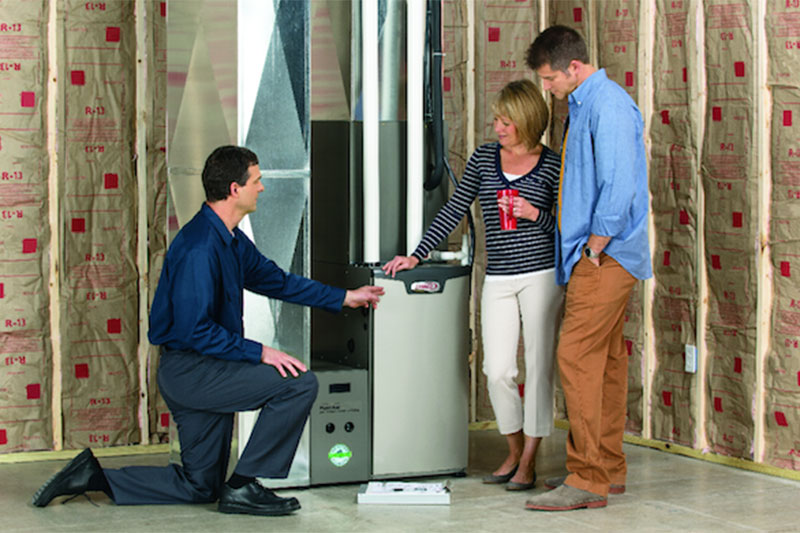
Natural gas furnaces need sufficient space and airflow to run correctly.
Your furnace can overheat if it doesn’t have enough space. It also makes it hard for our specialists to complete furnace repair.
Annual furnace maintenance is important to keep your equipment working smoothly. A routinely serviced furnace may run more efficiently, which could lower your heating expenses.
Related: How Does Furnace Maintenance Impact the Energy Efficiency of Your Home?
Maintenance often helps us spot issues before they begin. This could help lower future repair expenses and potentially extend the life of your unit.
So how much room should your system really have?
How Much Space Will a Furnace Take Up?
If you’re remodeling your basement or closing off your furnace room, you should take a look at manufacturer instructions and Safford statutes for clearance guidelines.
As a general suggestion, your heater should be 30 inches away from furnace room walls on all sides. This permits our service technicians to easily work on it.
You also need to check the space has ample airflow and ventilation, especially if you have an older furnace with a metal flue.
Related: Furnace Service or Furnace Replacement: What to Consider
This kind of furnace draws combustion air from the adjacent space. If there’s inadequate air, dangerous gas fumes and poisonous carbon monoxide could flow back into your home.
If your furnace is placed in a little room with a gas water heater, you may need to put in extra openings. This could include a fully louvered door or vents in the walls.
You don’t need to consider airflow and ventilation as much if you have a up-to-date, high-efficiency furnace with PVC piping. Your unit uses one pipe as an exhaust vent and the other to add air.
Keep Hazardous Items Separate from Your Furnace
Although furnace rooms double as laundry and storage space, you should keep yours free of clutter that could be fire hazards.
This includes:
- Clotheslines
- Cleaning or laundry products
- Gasoline, paint or paint thinner
- Rags and papers
- Wood scraps and sawdust
- Used filters
If you have a cat, place your litter box elsewhere. Cat urine contains ammonia, which could create wear on your furnace’s heat exchanger. Plus, the furnace could circulate the unpleasant odors around your home.
You should also routinely vacuum around your furnace to prevent dust from building up.
Related: Is it Time for Furnace Service or Replacement?
Request Expert Furnace Service
Whether you want furnace replacement or routine maintenance in Safford, B&D Air Conditioning can expertly take care of your needs. Our highly trained technicians can work on any HVAC model or brand.
Call us at 928-432-6018 or use our online scheduler to request an appointment right away.
